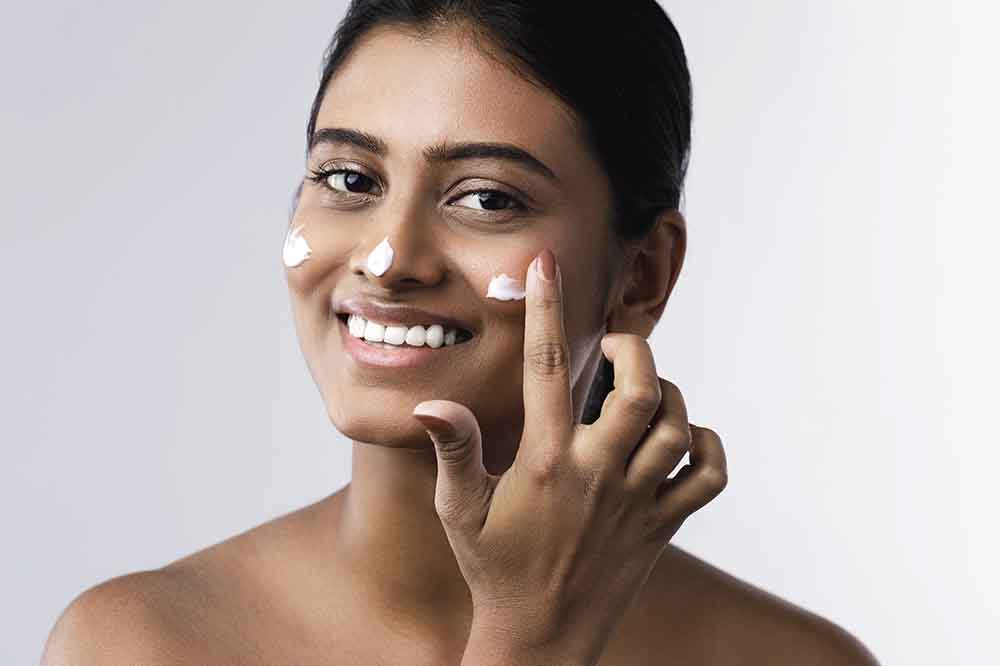Skin hydration is essential for maintaining its health and appearance. Moisturizing not only helps lock in moisture but also nourishes the skin, creating a healthy barrier that protects against environmental stressors. Dry, flaky skin can lead to irritation, discomfort, and premature ageing. Therefore, understanding how to use moisturizer properly is crucial for preserving the skin’s elasticity, smoothness, and overall vibrancy. Whether it’s your face or body, moisturising helps ensure the skin remains soft, hydrated, and glowing. But how to use moisturizer effectively for maximum benefits?
Benefits of Moisturising
Moisturizing your skin regularly offers a range of significant benefits. First, it helps to hydrate and retain the skin's natural moisture, preventing dryness and tightness. This hydration helps create a smooth, even skin texture and tone. Moisturizing also plays a crucial role in improving the skin’s elasticity, helping to reduce the appearance of fine lines and wrinkles over time. For people with sensitive skin, it helps in minimising irritation caused by environmental factors or harsh cleansers. Furthermore, properly moisturised skin is more resilient to environmental damage, pollution, and harmful UV rays. By moisturising, you’re providing your skin with a shield against these external aggressors, promoting long-term health and beauty.
Moisturizing also supports the skin's natural barrier function, which is crucial in preventing moisture loss and protecting against harmful bacteria and irritants. A strong, intact skin barrier keeps the skin healthy, preventing conditions like eczema and acne flare-ups.
For those dealing with conditions like acne or eczema, moisturising helps balance oil production, keeping the skin hydrated without triggering excess sebum production. It can also soothe redness and inflammation, making it an essential part of managing such skin concerns.

Body Lotion vs Face Moisturizer
When it comes to moisturizing, it’s important to choose the right product for each area of your body. While body lotions are excellent for keeping the skin hydrated from head to toe, they are often too heavy for the delicate skin on your face. Body lotions tend to contain stronger fragrances, alcohol, and thicker ingredients that may clog pores or irritate the skin on the face. On the other hand, face moisturizers are specifically formulated to be lightweight and non-comedogenic, ensuring they hydrate without overwhelming the skin.
Using a face moisturizer can provide the right level of hydration and nutrients without causing breakouts or irritation. Face moisturizers typically have additional ingredients like vitamins, antioxidants, and SPF protection, which are tailored for facial skin concerns like fine lines, uneven skin tone, and sun protection. So, remember: your face deserves special care, and it’s best to use a moisturizer designed specifically for that purpose.
How to Moisturize Your Face
Knowing how to use moisturizer on your face can make all the difference in achieving healthy, hydrated skin. Here’s a simple step-by-step guide:
1. Cleanse Your Skin: Start with a clean face. Use a gentle cleanser suitable for your skin type to remove dirt, oil, and makeup. Pat your face dry with a soft towel.
2. Apply While Damp: The best time to apply moisturizer is when your skin is still slightly damp after washing your face. This helps to lock in moisture and hydrate the skin more effectively.
3. Use the Right Amount: A small amount of moisturizer is usually enough. Start with a pea-sized amount and apply it evenly to your face, focusing on dry areas. Don’t over-apply, as this can make your skin feel greasy.
4. Gently Massage: Using upward, circular motions, gently massage the moisturizer into your skin. This helps improve blood circulation and enhances the absorption of the product.
5. Don’t Forget the Neck: Be sure to extend your moisturizer down to your neck, an area that is often overlooked but just as vulnerable to dryness and ageing.
How Often and When to Moisturize Your Face
How often should you moisturize your face? The answer depends on your skin type and daily routine. However, for most people, it’s best to moisturise twice a day—once in the morning and once before bed. The morning routine locks in hydration after washing your face and protects against environmental stressors throughout the day. At night, moisturising helps the skin repair and regenerate as you sleep.
For dry skin, consider moisturizing more frequently, especially in cold or dry weather when the skin’s moisture levels deplete faster. Oily skin types may only need a lighter moisturizer, or they may be able to skip nighttime moisturizing if their skin feels sufficiently hydrated.
Face Moisturizing Tips
1. Choose the Right Moisturizer for Your Skin Type: If you have oily skin, opt for a lightweight, oil-free moisturizer. For dry skin, select a thicker cream that provides intense hydration. Sensitive skin benefits from fragrance-free and gentle moisturizers.
2. Use Sunscreen: If your moisturizer doesn’t contain SPF, make sure to apply sunscreen separately in the morning. This helps prevent sun damage, which can lead to premature ageing and dark spots.
3. Avoid Over-Washing Your Face: Excessive washing can strip the skin of natural oils, leading to dryness. Stick to cleansing your face twice a day.
4. Layer Products: If you use serums or oils, apply them before your moisturizer to allow them to penetrate deeply into the skin. Moisturizer should be the last step in your skincare routine.
5. Hydrate From Within: Keep your skin hydrated by drinking plenty of water throughout the day, which will support your moisturizer’s effects.

Conclusion
Moisturizing your skin is not just a cosmetic step in your skincare routine; it is a fundamental aspect of maintaining healthy, hydrated, and glowing skin. It’s essential for both the short-term and long-term health of your skin, as regular moisturization helps to replenish the skin's natural moisture balance, making it appear softer, smoother, and more radiant. When done correctly, it provides an added layer of protection against the harsh effects of the environment, such as pollution, extreme temperatures, and UV radiation.
Knowing how to use moisturizer effectively is key to maximising its benefits. Applying the right amount and using the correct technique, like massaging it gently in upward motions, allows the product to penetrate deeper into the skin and perform at its best. Additionally, understanding your skin type and choosing the appropriate product—whether it's a thick, nourishing cream for dry skin or a lightweight gel for oily skin—ensures that you're providing your skin with exactly what it needs.
Consistency is crucial in skincare, and moisturising is no exception. Just like any other essential skincare step, the benefits of moisturising are cumulative, building up over time. When you apply moisturizer consistently, it helps to maintain the skin's barrier, preventing moisture loss and ensuring your skin stays hydrated throughout the day. Regular use of a moisturizer tailored to your skin type can help combat signs of ageing, reduce irritation, and improve your skin's texture and elasticity.
Ultimately, moisturising is an act of self-care. Taking the time each day to nourish your skin not only improves its appearance but also helps you feel confident and rejuvenated. So, whether you're using a body lotion to hydrate your skin from head to toe or a targeted face moisturizer for specific concerns, the key is to be consistent, mindful, and gentle with your skin. With the right product and proper application, you’ll enjoy the radiant, youthful-looking skin that you deserve.
FAQs
How to use a moisturizer properly?
Start with clean skin, apply a small amount of moisturizer on damp skin, and gently massage it using circular motions. Make sure to moisturise both your face and neck.
When should I apply a moisturizer?
It’s best to apply moisturizer twice a day—once in the morning after cleansing and once at night before going to bed to lock in moisture while you sleep.
Can I use body lotion on my face?
It's not recommended. Body lotion is often too thick for the face and may clog pores. It's better to use a moisturizer designed specifically for facial skin.
How can I hydrate my skin if I have oily skin?
Use a lightweight, non-comedogenic moisturizer that won’t clog your pores. Hydrating gels or water-based moisturizers are great for oily skin.
How do I choose the right moisturizer for my skin type?
For dry skin, opt for thick creams or oils; for oily skin, look for lightweight, oil-free formulas. For sensitive skin, choose fragrance-free and hypoallergenic options.